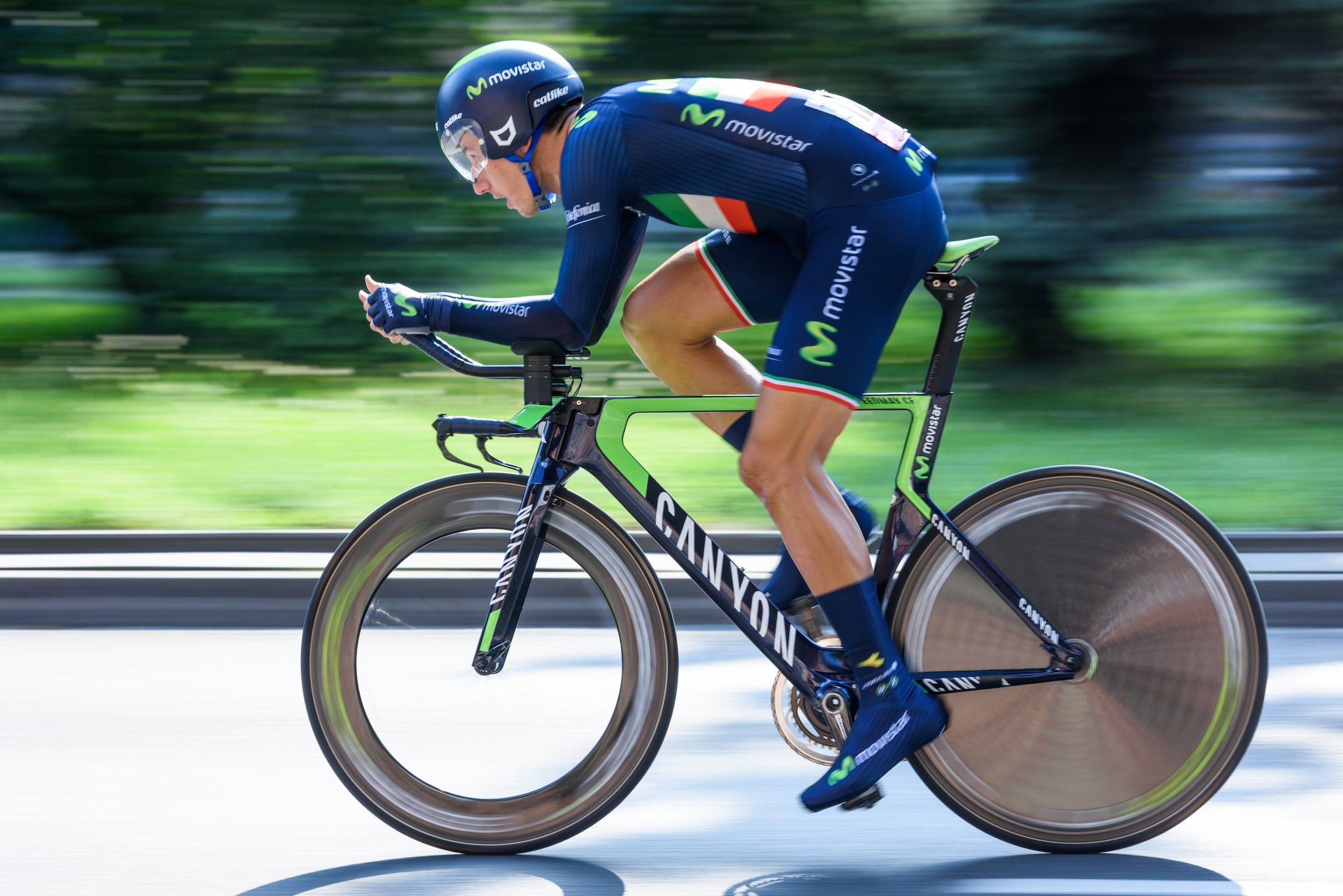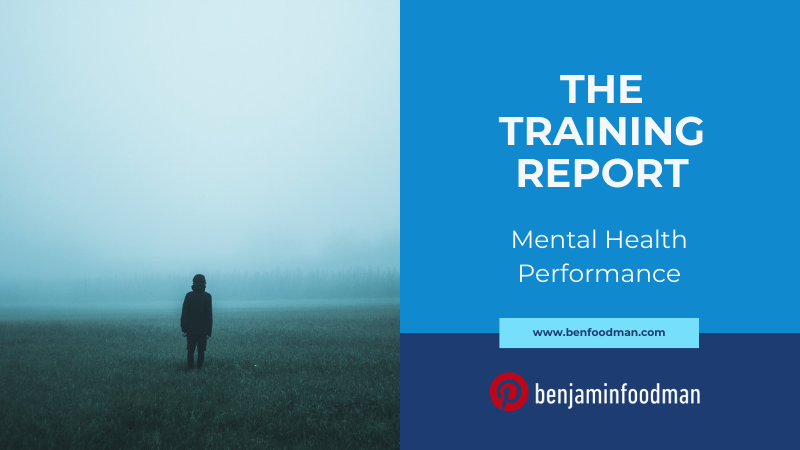Mental Health Performance - Cannabinoid-Based Medications, Athletes & Psychological Health Considerations
About the Author
Ben Foodman is a licensed psychotherapist & performance specialist. He owns his private practice located in Charlotte North Carolina where he specializes in working with athletes to help them overcome mental blocks (the yips), PTSD, ADD / ADHD and achieve flow states through the techniques of Brainspotting & Neurofeedback. If you are interested in services, use the link here! Enjoy the article below!
Introduction: Cannabis & Athlete Mental Health
There has been a spirited debate within the field of mental health about both the benefits and detrimental aspects involving Cannabinoid-Based Medications (CBMs). Like most topics being discussed in today’s current climate, individual agendas have clouded the truth about both the negative and positive aspects associated with CBMs. Experts on this issue believe that the truth probably lies somewhere in between these discussion points & research seems to suggest that Cannabinoid-Based Medications are neither as bad as people claim it is, nor is it the ‘miracle drug’ that supporters of CBMs suggest. Because this is such a common issue that comes up in my work with athletes, I thought it would be beneficial to review this topic in more depth.
Keep in mind, while there is a plethora of high quality research that explores the side-effects when using CBMs, there is still much we have to learn about this topic. Because there are so many different avenues of discussion on this issue, for this Training Report I want to explore introductory components of Cannabinoid-Based Medications. I will first review how CBMs interact with the body, followed by reviewing the differences in THC bioavailability and effects linked between inhaled and ingested CBMs. Finally, I will discuss a lesser known issue that adversely affects users which is known as Cannabinoid Hyperemesis Syndrome (CHS). First, let’s begin by establishing a base understanding about the endocannabinoid system which interacts with THC & CBD in the body.
Part I. The Body & Cannabis
One of the first places to begin in understanding how our body interacts with THC is by understanding the endogenous cannabinoid system. Per Current Psychiatry Vol. 20 NO. 5, ‘The endogenous cannabinoid system is abundantly present within the peripheral and central nervous systems. The first identified and best studied endocannabinoids are N-arachidonoyl-ethanolamine (AEA; anandamide) and 2-arachidonoylglycerol (2-AG). Unlike typical neurotransmitters, AEA and 2-AG are not stored within vesicles within the presynaptic neuron axons. Instead, they are lipophilic molecules produced on demand, synthesized from phospholipids at the membranes of post-synaptic neurons and released into the synapse directly. Acting as retrograde messengers, the endocannabinoids transverse the synapse, binding to receptors located on the axons of the presynaptic neuron.’
‘Two receptors-CB1 and CB2-have been most extensively studied and characterized. These receptors couple to Gi/o-proteins to inhibit adenylate cyclase, decreasing Ca2+ conductance and increasing K+ conductance. Once activated, cannabinoid receptors modulate neurotransmitter release from presynaptic axon terminals. Evidence points to a similar retrograde signaling between neurons and glial cells. Shortly after receptor activation, the endocannabinoids are deactivated by the actions of a transporter mechanisms and enzyme degradation’ (As a side note, this complex endocannabinoid system also helps modulate homeostasis, temperature, appetite, sleep wake cycle, reproduction, CBD, THC receptors). Now that we have reviewed the endocannabinoid system, let’s review cannabinoid-based medications & differences between inhaled vs. ingested CBM medications.
Part II. THC & Bioavailability
It’s important to note that marijuana contains multiple components (cannabinoids). Per Current Psychiatry ‘the most extensively studied are delta-9 tetrahydrocannabinol (THC) and cannabidiol (CBD). Because it predominantly binds CB1 receptors centrally, THC is the major psychoactive component of cannabis; it promotes sleep and appetite, influences anxiety, and produces the ‘high’ associated with cannabis use. By contrast, CBD weakly binds CB1 and thus exerts minimal or no psychoactive effects. Cannabinoid absorption, metabolism, bioavailability, and clinical effects vary depending on the formulation and method of administration. THC and CBD content and potency in inhaled cannabis can vary significantly depending on the strains of the cannabis plant and manner of cultivation. To standardize approaches for administering cannabinoids in clinical trials and for clinical use, researchers have developed pharmaceutical analogs that contain extracted chemicals or synthetic chemicals similar to THC and/or CBD'.’ Below is a chart that illustrates the important differences in bioavailability when consumed via inhalation or ingestion.
Part III. DIFFERENCES IN THC BIOAVAILABILITY AND EFFECTS BETWEEN INHALED AND INGESTED CANNABINOID-BASED MEDICATIONS
FACTOR
Peak blood levels of THC
Bioavailability
Rate of absorption
First-pass metabolism
Onset of THC effects
Psychoactive effects of THC
Duration of THC effects
INHALED CBM
Higher; achieved in minutes
Nearly 30%
Minimal/none
Rapid
Relatively greater
Brief
INGESTED CBM
Lower; achieved in 1-4 hours
Approximately 4-20%
Slow
Extensive
Slow
Relatively less
Longer/sustained
Part IV. Athletes, Cannabis & Mental Health Considerations
There is no doubt that cannabinoid based medications have been shown to help some people reduce symptoms associated with significant physical and psychological issues such as multiple sclerosis, cancer, HIV/AIDS, glaucoma, Crohn’s disease, anxiety, reduction of nausea, increase appetite, decrease pain and inflammation, improvement with muscle control problems, pain reduction, controlling epileptic seizures, etc. Doctors with specialized training in prescribing CBMs need to be able to collaborate with patients on best treatment outcomes, especially if CBMs are an appropriate intervention. With that being said, one issue that both doctors and patients should be aware of that can significantly affect some individuals is Cannabinoid Hyperemesis Syndrome (CHS). Symptoms surprisingly include recurrent nausea, vomiting, abdominal pain and retching. This is a widely misunderstood diagnosis and is often left out of the discussion when it comes to evaluating the potential positives compared to the negatives of using CBM, which in turn can leave many potential users confused and dissatisfied. Furthermore a significant amount of individuals with long-time marijuana use have reported experiencing CHS symptoms.
Because historically there has been such an aggressive campaign to delegitimize the use of CBMs, many advocates of CBMs may feel the urge to minimize the criticisms in order to counteract the misinformation campaign that has prevented patients from receiving many of the full benefits of using CBMs. While this is understandable, athletes that are considering using CBMs need to be aware of not only the different social agendas at play in regards to opinions on CBM use, but athletes also need to consider that there are reasonable reward vs. risk possibilities. While there are many elite athletes who suffer from nausea, chronic pain and other issues that can potentially be ameliorated by CBM, there is also the potential to develop some of the previously mentioned adverse reactions along with other unpredictable issues. Athletes and their healthcare providers need to take a reasonable and balanced approach when deciding to use CBMs, and be aware of all of the biopsychosocial aspects involved with CBMs to make the best healthcare decision.
Note To Reader:
If you are an athlete reading this segment of the TRAINING REPORT, hopefully this content was helpful! I put the Training Report together because I felt like many of the discussions on issues such as the Yips/mental blocks, strength training & other subject matter on athlete performance concepts were really missing the mark on these ideas (e.g. how trauma is the direct cause of the Yips). If you are interested in learning more, make sure to subscribe below for when I put out new content on issues related to sport psychology & athlete performance! Also, if you are looking to work with a mental performance specialist, you are in the right place! USE THIS LINK to reach out to me to see if my services are the right fit for your goals!
ARE YOU ON THE LIST?
Make sure you’re signed up to Ben’s mailing list to receive news & updates on new strategies in sport psychology, upcoming workshops & products. Don’t wait, sign up now!


































